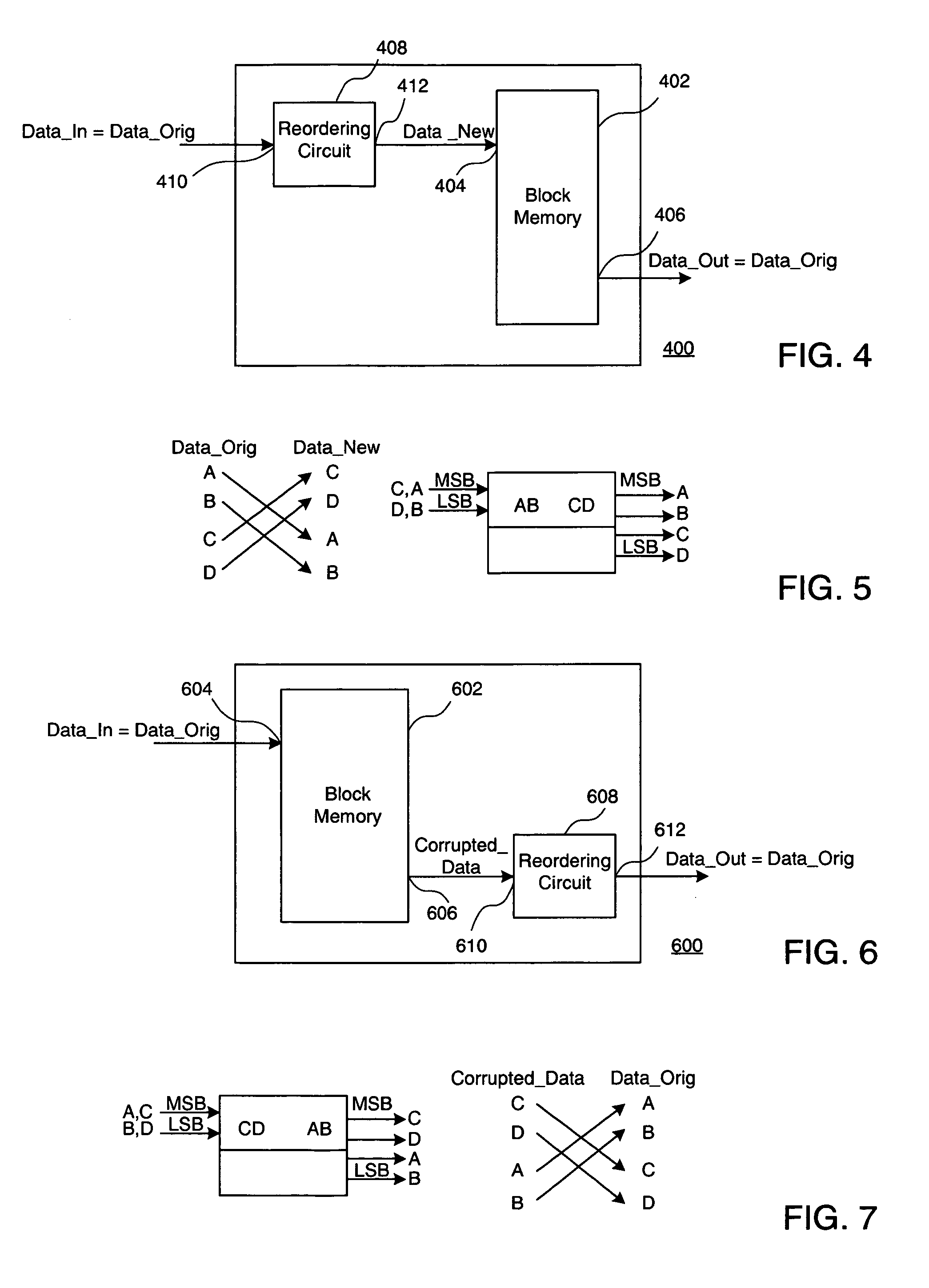Memory of and circuit for rearranging the order of data in a memory having asymmetric input and output ports
- Summary
- Abstract
- Description
- Claims
- Application Information
AI Technical Summary
Problems solved by technology
Method used
Image
Examples
Example
DETAILED DESCRIPTION OF THE DRAWINGS
[0020]Turning first to FIG. 3, a block diagram of a circuit for writing data to and reading data from a memory having asymmetric ports according to an embodiment of the present invention is shown. One way to read the correct data from a memory with an aspect ratio greater than one is to reverse the order that the ports are connected (i.e. the LSB of the input data bus is connected to the MSB of the memory input bus). Because the output ports are switched by reversing the order of the input and output buses, the problem of different aspect ratios is solved. For example, FIG. 3 illustrates what happens in the above example when the input and output ports are flipped. Now the two writes into the block memory are ‘BA’ and ‘DC’. If the data was read out normally, then the sequence would then be ‘DCBA’, but reversing the order of the output ports gives the correct sequence ‘ABCD’.
[0021]While this approach works for all of the different aspect ratios, it...
PUM
 Login to View More
Login to View More Abstract
Description
Claims
Application Information
 Login to View More
Login to View More - R&D Engineer
- R&D Manager
- IP Professional
- Industry Leading Data Capabilities
- Powerful AI technology
- Patent DNA Extraction
Browse by: Latest US Patents, China's latest patents, Technical Efficacy Thesaurus, Application Domain, Technology Topic, Popular Technical Reports.
© 2024 PatSnap. All rights reserved.Legal|Privacy policy|Modern Slavery Act Transparency Statement|Sitemap|About US| Contact US: help@patsnap.com










